Ocean Acidification Experiment/ CO2 Breath Test
- by KitchenPantryScientist
Last week, I wrote about Carbon, Bananas, Coal and You and promised to try to come up with a safe, easy way to see the carbon dioxide in your breath, so here it is! (It’s one of the experiments featured in my book Kitchen Science Lab for Kids.)
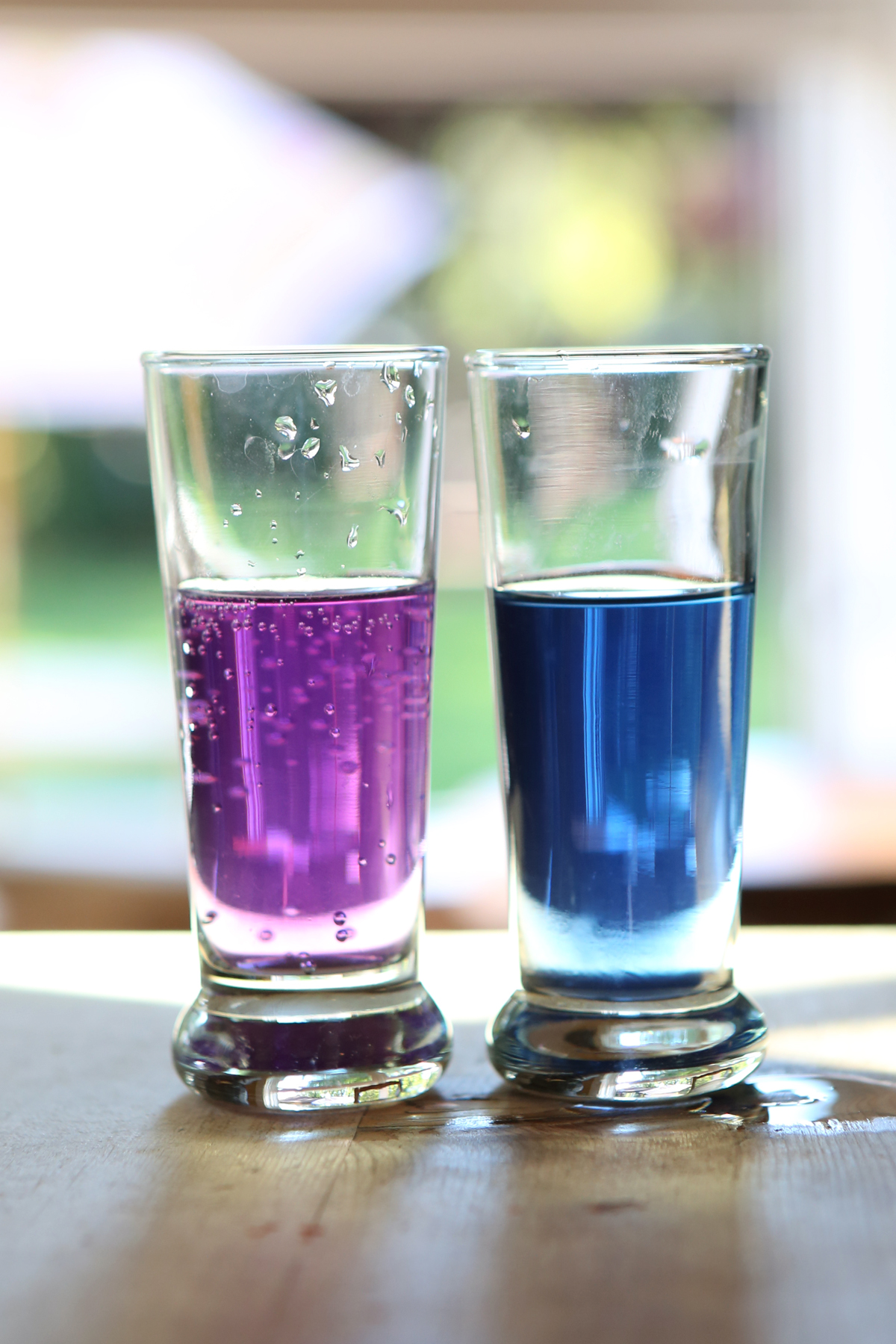
Ocean Acidification Experiment from Kitchen Science Lab for Kids (Quarry Books)
For both experiments, the star of the show is red cabbage juice, a safe, natural, easy-to-make acid/base indicator and the same one you can use to make magic potion and red cabbage litmus paper.
For the CO2 Breath Test, the trick is to use a very small volume of cabbage juice, since it’s not a very sensitive acid indicator.
You’ll need red cabbage, drinking straws, and very small cups (the ones you measure kids’ medicine with work well) or test tubes.
- Chop a head of red cabbage, boil it for 15 minutes, cool and collect the juice. It will be purplish in water and turns blue when exposed to a base or pink when exposed to an acid. (The molecule that gives it color can change shape to absorb light differently.)
- Pour a very small volume- a teaspoon or two (5 to 10 ml)- of the (cooled) juice into two small cups. Take a straw, put it all the way against the bottom of one cup and blow through the straw repeatedly for a few minutes until you see the cabbage juice turn noticeably pinker than the juice in the control cup. It may take several minutes to see a difference, so be patient! Test tubes are less messy since the juice can’t splatter so much.
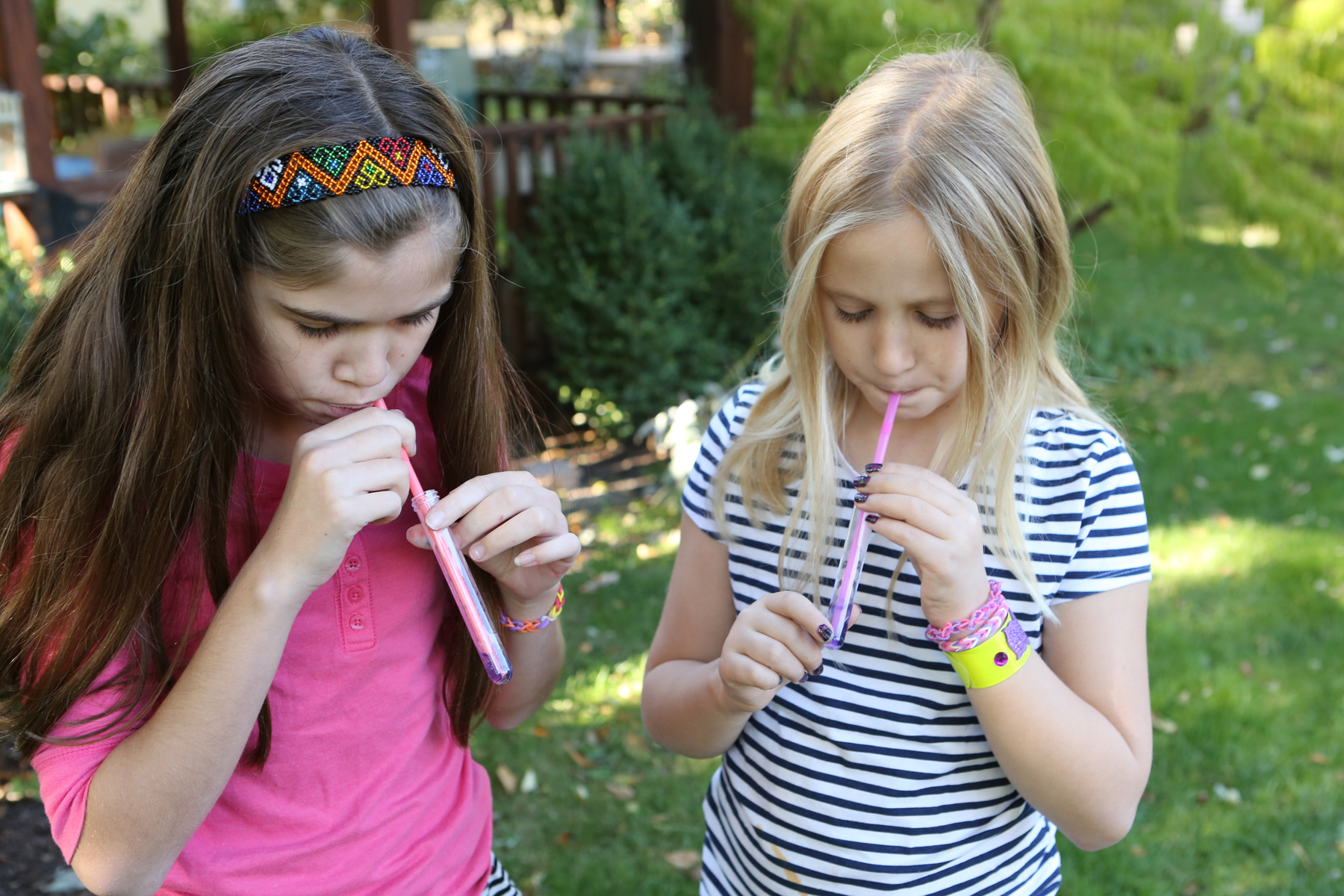
Ocean Acidification Experiment from Kitchen Science Lab for Kids (Quarry Books)
What happens? The carbon dioxide in your breath combines with the water in the cabbage juice to form carbonic acid, causing the pH of the solution to drop and the cabbage juice to take on a pinkish hue.
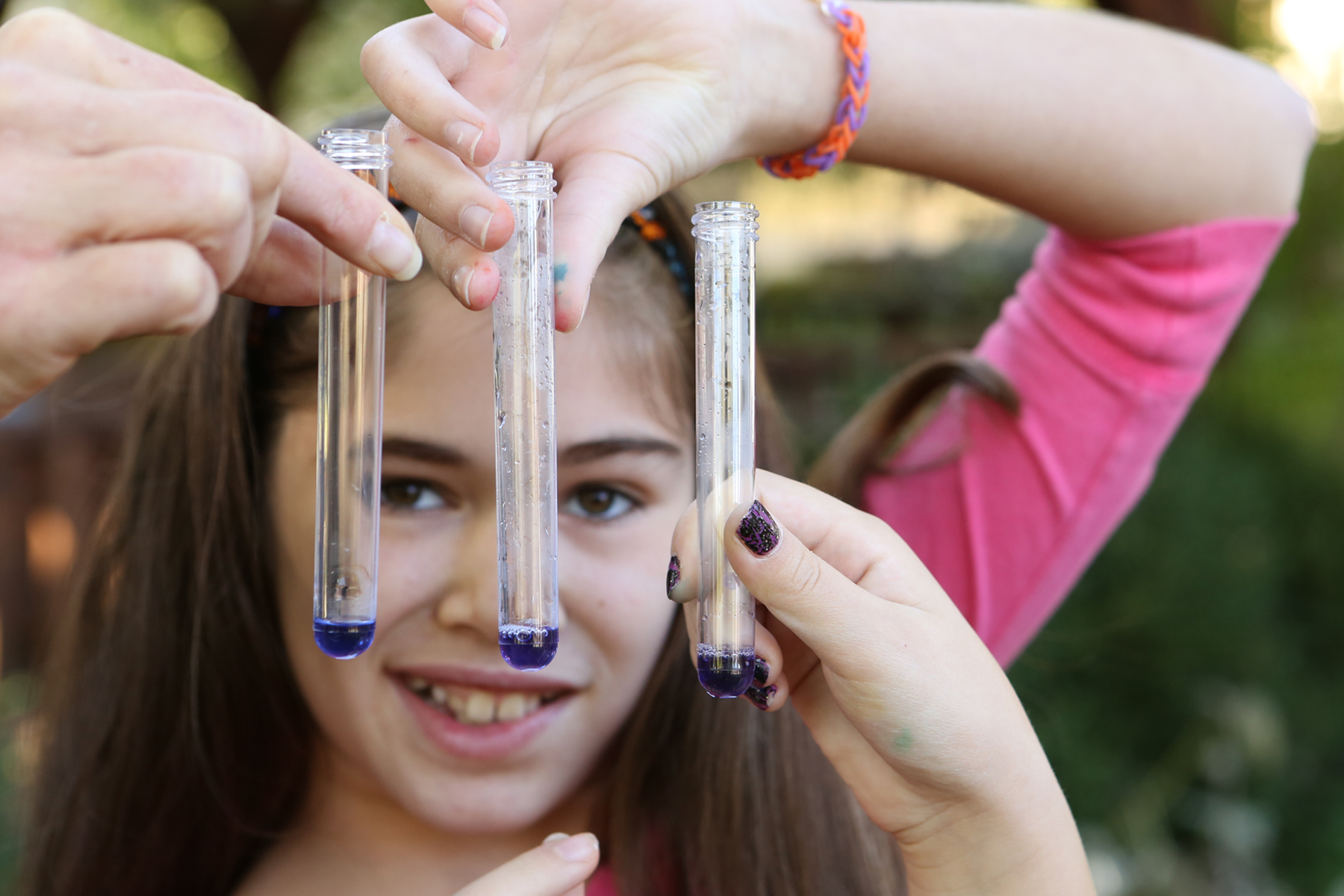
Ocean Acidification Experiment from Kitchen Science Lab for Kids (Quarry Books)
Why is this interesting? About a quarter of the carbon dioxide released by activities like burning fossil fuels and burning down rainforests is absorbed by our world’s oceans. This results in the ocean water becoming more acidic, like the cabbage juice in the experiment, and can have an effect on sea life, like coral. To learn more about ocean acidification and the chemistry of ocean acidification, check out NOAA’s amazing website.
You can explore the same concept (and see why carbonated drinks are hard on your teeth) by pouring uncarbonated water into one cup of cabbage juice and carbonated water into another. If you can, choose water from the same source, so you know the only difference is the carbon dioxide that’s been added to make it fizzy! Or, you could use dry ice to add carbon dioxide bubbles to water and test it before and after you add bubbles! 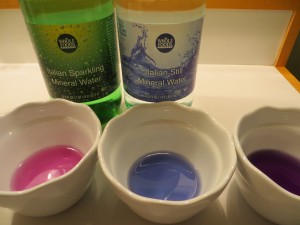
What happens if you add yeast to cabbage juice and let it grow for a while?
You can use your leftover cabbage juice to make red cabbage litmus paper and then for a “magic potion” experiment.
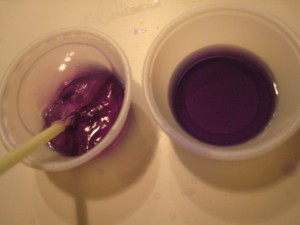 or
or